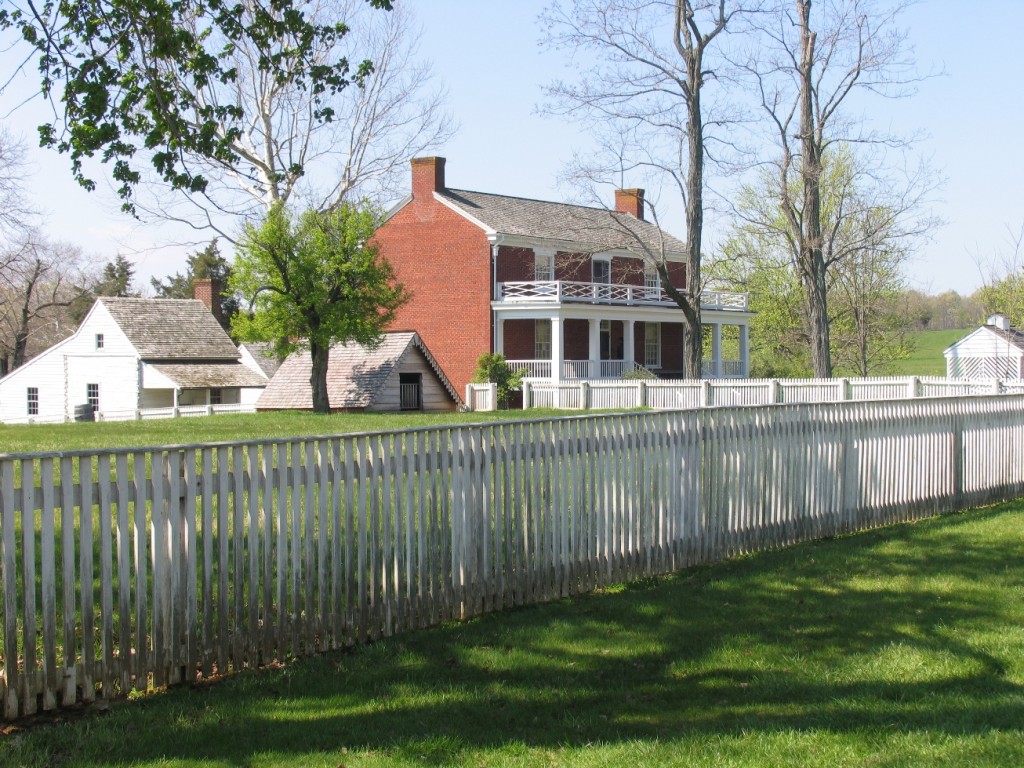
How can you spark an interest in history for someone who says they have no interest in the subject? Instead of making them read history, show them history. One way you can do this is by taking them to Virginia, a state rich in history with an abundance of historical sites. One of these sites is Appomattox Court House National Historic Park in Appomattox, VA, two miles northeast of the town of Appomattox, 95 miles west of Richmond, and just 20 miles from Lynchburg.
What is special about Appomatox Court House? From the National Park Service web site:
On Palm Sunday, 1865, Lee’s surrender at Appomattox Court House, Virginia signaled the end of the Southern States attempt to create a separate nation. It set the stage for the emergence of an expanded and more powerful Federal government. In a sense the struggle over how much power the central government would hold had finally been settled.
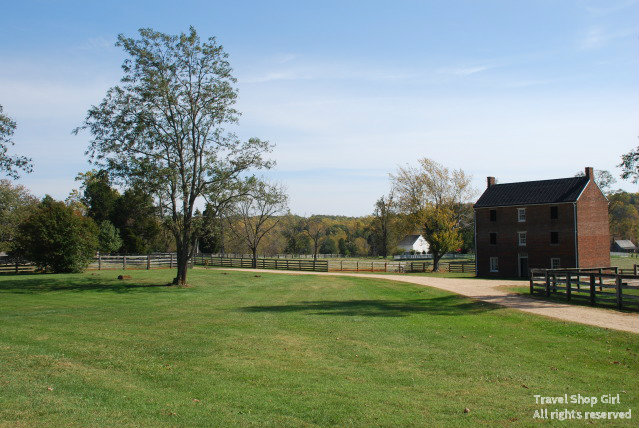
When people plan their visit to Appomattox Court House, they expect to arrive and view a building where the surrender occurred that signaled the start of the end to the Civil War. This, however, is not what they will see. Let’s break it down with a little help from my childhood friend, the Encyclopedia Britannica:
Appomattox Court House, in the American Civil War, site in Virginia of the surrender of the Confederate forces to those of the North on April 9, 1865. After an engagement with Federal cavalry, the Confederate Army of Northern Virginia was surrounded at Appomattox, seat of Appomattox county, Virginia, 25 miles east of Lynchburg. Three miles to the northeast, at the former county seat, known as Appomattox Court House, General Robert E. Lee surrendered to General Ulysses S. Grant, thus effectively ending the Civil War. This location was virtually deserted after removal of the county seat to the new town of Appomattox in 1892 but was made a national historical monument in 1940; its buildings, including the McLean House, in which the formal surrender took place, were restored to their 1865 condition. In 1954 the entire 968-acre area was designated a historical park.
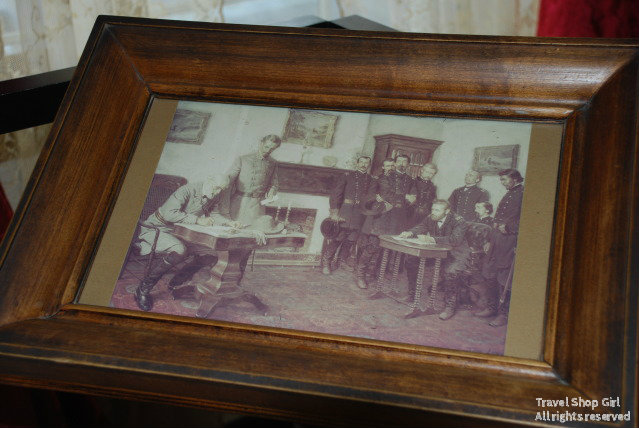 Why did the Confederate Army surrender? From Civil War for Kids: Robert E. Lee Surrenders at Appomattox:
Why did the Confederate Army surrender? From Civil War for Kids: Robert E. Lee Surrenders at Appomattox:
In early 1865, the Union Army began marching through Virginia, pushing back the Confederate forces. In hopes of uniting with more Confederate troops in North Carolina, General Robert E. Lee and the Confederate Army abandoned the capital of Richmond and retreated. However, the Union Army soon cut off their retreat and they were forced to stop at Appomattox, Virginia. General Grant and the Union Army had the Confederates surrounded. The Confederates were low on supplies, many soldiers were deserting, and they were greatly outnumbered. Upon looking at the conditions and the odds, General Lee felt he had no choice but to surrender.
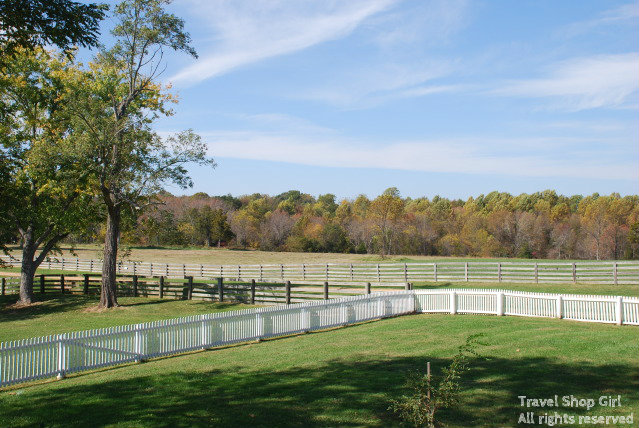 Although we might view a courthouse as an official building for a city or a county, the Appomattox Court House is actually a village consisting of about 30 buildings that have been rebuilt or restored to help visitors get a feel for what the village must have felt like back on that day in April 9, 1865. Visitors can walk the same roads walked by General Lee and General Grant as well as their soldiers. Looking around, it is difficult to imagine that over 27,000 Confederate soldiers surrendered and were later paroled in such an otherwise small area. Keep in mind that in 1850, the village consisted of approximately 150 people total. The dirt road above between the fences is where the men of the Army of Northern Virginia marched before the Union Army, laid down their flags, stacked their weapons, and began their journey back home. Although they were understandably upset about their defeat, General Lee and the Confederate Army appreciated the fairness with which they were treated.
Although we might view a courthouse as an official building for a city or a county, the Appomattox Court House is actually a village consisting of about 30 buildings that have been rebuilt or restored to help visitors get a feel for what the village must have felt like back on that day in April 9, 1865. Visitors can walk the same roads walked by General Lee and General Grant as well as their soldiers. Looking around, it is difficult to imagine that over 27,000 Confederate soldiers surrendered and were later paroled in such an otherwise small area. Keep in mind that in 1850, the village consisted of approximately 150 people total. The dirt road above between the fences is where the men of the Army of Northern Virginia marched before the Union Army, laid down their flags, stacked their weapons, and began their journey back home. Although they were understandably upset about their defeat, General Lee and the Confederate Army appreciated the fairness with which they were treated.
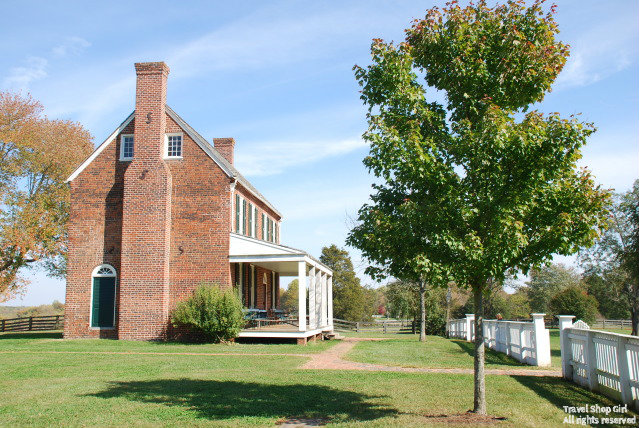
The oldest structure within the village at Appomattox Court House National Historic Park is the Clover Hill Tavern, which was built in 1819 by Alexander Patteson for travelers on the Richmond-Lynchburg Stage Road. The Clover Hill Tavern served travelers along the Richmond-Lynchburg Stage Road. For several decades, it offered the village’s only restaurant, only overnight lodging, and only bar. Its presence helped prompt the Virginia legislature to locate the Appomattox County seat here. In 1846, the courthouse was built across the street. By 1865, the tavern had come on hard times – a “bare and cheerless place”, according to one Union general. It was one of only two buildings in town used by the Federal army during the surrender process.
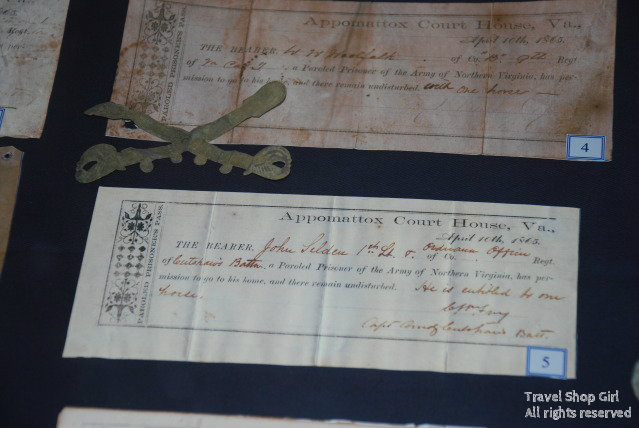
Here, on the evening of April 10, 1865, Union soldiers set up printing presses and started producing paroles for the surrendered Confederates. The Federals printed more than 30,000 parole documents here. Restored in 1954, the building houses a representative exhibit of the printing of thousands of parole passes for the surrendered Confederate soldiers. By allowing the soldiers to be paroled, they could return home instead of going to jail. This was important as it was the beginning of harvest time and many of the soldiers were from farms back home. Soldiers from the area were probably back home in time for dinner.
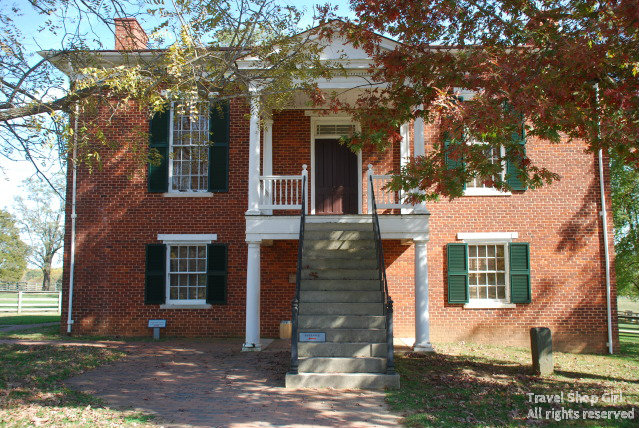
A visit to Appomattox Court House National Park usually begins in the Visitor Center located in the reconstructed Courthouse. Here you will find museum exhibits, including an electronic map of Lee’s retreat and a theater where different 15-minute slide programs are shown. From here you can walk to the various historic building in the village including the McLean House where Generals Lee and Grant met, Clover Hill Tavern, Appomattox County Jail, Plunkett-Meeks Store, and others. There is a bookstore on site as well as exhibits along Route 24 and a hiking trail. During peak seasons, Living History interpreters can be found walking the roads and giving chats to passers by. It is recommended that you allow at least 3-4 hours to visit the historical village.
The Visitor Center is open daily from 8:30 a.m. to 5 p.m. with the exception of closures on Federal Holidays during the winter:
Closed: Thanksgiving, Christmas Day, New Years, Presidents Day and Martin Luther King Day.
Summer Fees: (Memorial Day weekend through Labor Day weekend) are $4/person or $10 /vehicle (15 and under are free)
Winter Fees: (After Labor Day weekend up to Memorial Day weekend) are $3/person or $5/vehicle (15 and under are free)
To learn more, visit the Appomattox Court House web site for more information including directions and information for teachers, children, and scout leaders.



